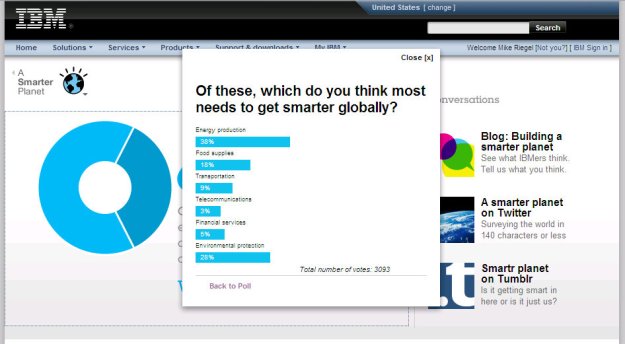As I caught up on the pile of “snail mail” at home this past weekend after being gone on holiday to the beach for a week (photo below) – I opened and almost

Beach Holiday 2009
discarded an envelope from our local power company here in North Carolina, Progress Energy. Since I pay the bill with a checking account debit and we keep our house fairly efficient to keep costs low (78-82 degrees in the summer, and ~67 degrees in the winter), I rarely read all the inserts that some with each statement.
But this one was different – it was an invitation to join the Progress Energy Residential Load Control program. Under the program, customers can volunteer to join the Progress smart grid, enabling the utility to add a smart device to the customers’ AC unit that allows Progress to cycle the unit off for up to 15 minutes per hour during peak demand times when the electrical grid is experiencing extreme loads. Besides the benefit of supporting the environmental value of this, customers who opt in are given a $25 annual credit on their bill.
While this might seem minor and is just a small step toward a full Smart Grid, Progress Energy claims in their regulatory filing for this and other related programs that they will achieve nearly 450 megawatts of peak-demand reduction, the equivalent of several large power plants. That’s a lot of power consumption savings.
The company has proposed a 50/50 shared- savings model, under which the costs and benefits of these programs will be evaluated together, and the benefits of reducing peak electricity demand will be shared between customers and the utility. The model is consistent with the provisions of the North Carolina’s energy bill enacted last year.
Given all the focus on green energy lately, it’s encouraging to see it trickle down to my neighborhood. I’m also intrigued by the shared cost savings model that they articulate – a 50-50 shared savings model with the consumer, which seems pretty equitable to me. As my wife and I talked about it, it was a pretty short “why WOULDN’T we do this?” Not only do we help the environment, we get a cost savings, all for a few minutes of potential reduced cooling during peak week day loads. And I suspect that’s just what Progress was hoping for – the “why wouldn’t we do this” reaction.
Today Progress extended their program further with launch of a twitter ID – EnergyAdvisors – that they will use to tweet energy saving tips to consumers. Some green tweeting!
I find their approach an interesting contrast to another vendor, in a different industry who could take a similar approach – Charles Schwab & Co brokerage. As I’m sure many of you do – I receive a pile of mail from them related to the various accounts I have (Retirement IRA statements, Education IRA statement, etc) at the end of each quarter. While they offer to send the statements to me electronically, given the importance of financial records for tax purposes, I am a bit old-fashioned and still prefer the paper copy. Since each envelope Schwab sends me costs them $0.26 in bulk postage, and probably ~$0.04 to print, that’s $0.30 per envelope. And I get typically 5 envelops per quarter, costing them $6.00/year If however, Schwab offered to share the cost benefit with me of stopping these mailings – and agreed to deposit 50% of the savings in my account each quarter – then I might reconsider. Over 25 years (assume costs are linear for simplicity) – that would add up to about $150 in savings – $75 for me and $75 for them. Multiply that for Schwab (or any other brokerage) times >1M account holders and they would see a material bottom line benefit. Maybe they should consider this type of shared benefit incentive to go green!
Just over a week ago – IBM also extended our commitment to help companies and clients “go green” by announcing the creation of the Green Sigma coalition. The coalition members will work with IBM to integrate their products and services with IBM’s Green Sigma (TM) which applies Lean Six Sigma principles and practices, to employ real-time metering and monitoring with advanced analytics and dashboards. This will allow clients to make better decisions about energy and water usage, waste and GHG emissions to improve efficiency, lower costs and reduce environmental impact. So far it’s been pretty well received in the industry as evidenced by the praise from IDC.
What experiences do you have on incentives to “go green.” Let me know!
mikeriegel1@gmail.com

